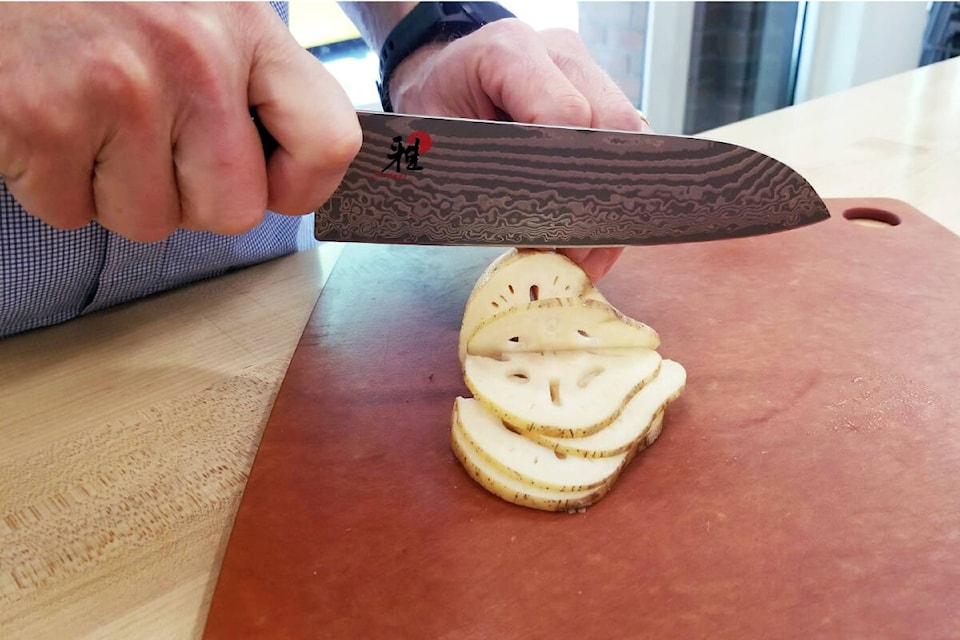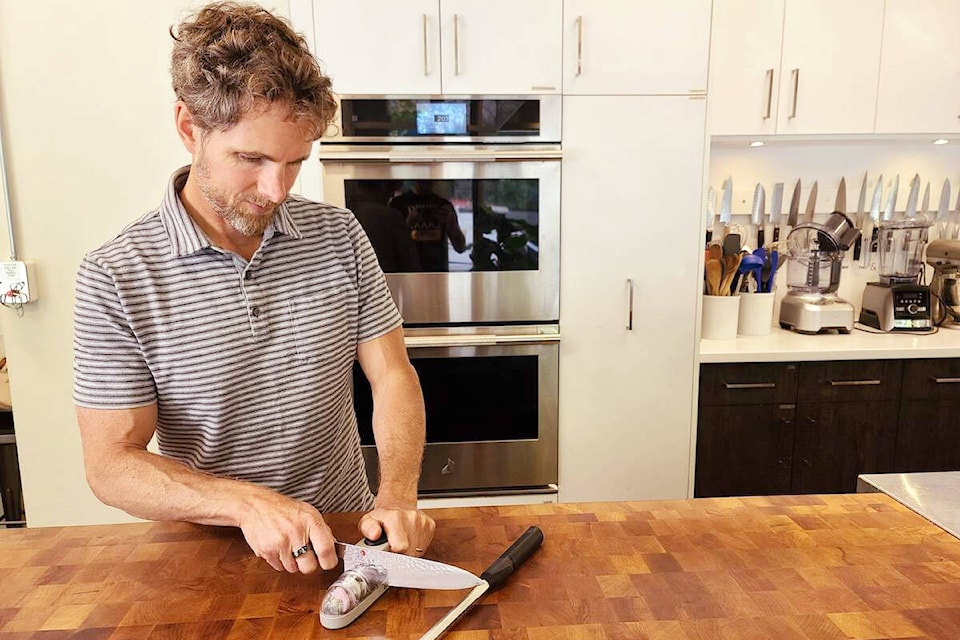From the bronze era to the steel shift 1,200 years ago, Japanese sword and knife-making has been as much an art as it is a science.
“Japanese knives are made pretty much the same way,” Jed Grieve of Cook Culture said.
To harvest iron sands, one of the building blocks of steel, the Japanese deliberately changed river flows to harvest the sands which accumulated in places of direction or speed change.
They also discovered that by adding carbon to iron, by melting it with charcoal in temperatures up to 1,500 degrees Celsius, the incredibly strong alloy, steel, was created.
Once a mound of steel is created, it is then sent to smiths where it is heated in a forge and hammered in on itself multiple times to oxidize and align the grain structure, enhancing its strength and durability.
The blade undergoes multiple grinding and polishing stages to refine its shape and create a smooth, sharp edge. This process is typically done by hand to ensure precision and consistency.
Meanwhile, the handle is crafted separately.
While certain processes have become more automated over the years (electric hammers or bellows might be used), it is still a craft and many knife products are still handmade around the world.
And just as a finely crafted sword can make its wielder feel powerful and appreciate the work put into it, so too can the right kitchen knife. Grieve explained to Black Press Media why investing in the right kitchen knife, along with the tools to take care of it, is well worth the investment.
READ ALSO: Take it slow…and even slower
Why is it worth having a good knife?
For starters, a good knife is going to have a reasonably hard blade which makes cutting that much easier (and cooking more enjoyable), said Grieve.
But it’s also something you might have a little pride in based on how it feels in your hand and the aesthetic. A good knife is also reasonably easy to look after and sharpen.
If you can only have one knife in the kitchen, what should it be?
The most popular knife in the Western world is an 8-inch French chef knife, but many of Grieve’s customers like a Japanese santoku knife, he said. Santoku means three virtues in Japanese, which refers to its ability to cut fish, meat and vegetables equally well.
With its shorter, thinner blade, and narrower profile, a santoku knife excels in precision cutting tasks, enabling smoother, more controlled slicing, dicing, and mincing of vegetables, meats, and fish. Its curved blade and lighter weight make it easier to manoeuvre, providing a comfortable grip and greater agility for users with smaller hands or those accustomed to Japanese culinary techniques. This makes it a fun knife for doing vegetables, Grieve said, which means you might end up eating more of them. Always a good thing.

What should you look for when purchasing a good knife?
Grieve recommends knife shoppers talk to a retailer they trust to cut through the marketing mumbo-jumbo from brands and to better understand their best options. And trying a knife in person is an important part of the process.
“Once you have an idea of the range of knives within your comfort zone of affordability, pick up the knife and put it in your hand,” Grieve said. “A knife may technically be amazing, but if you don’t connect with that knife, it’s worthless to you,” he said.
How much do you need to spend?
Getting a decent knife with good longevity and good quality steel is doable for $50-70, according to Grieve.
However, he said there are reasons to spend more if you have the means. Spending more means a sharper blade, a better aesthetic and craftsmanship. Plus, it can be a luxury item that you can be proud of.
“Your friends come over and you’ve got pride in this amazing, handcrafted, high carbon, beautiful Japanese blade, and you’ve got your method of how you store it and look after it. And it’s no different than the wine you’ve pulled out or the Kobe beef you bought. It’s all in that same level of just really loving to cook.”
Carbon or stainless steel?
Higher carbon content leads to easier sharpening and longer edge retention but requires more careful maintenance to prevent oxidation. Most commonly, people prefer stainless steel knives due to their resistance to rust and ease of care, Grieve said.
However, high-carbon blades, particularly traditional French chef knives, offer superior performance and are highly sought after for their history and craftsmanship. While older French knives often feature high-carbon steel, modern high-carbon blades are more commonly associated with Japanese knife-making techniques, showcasing a unique aesthetic with Damascus patterns and darker hues.
How to keep a knife sharp
No matter if you spend $50 or $1,000 on a knife, “keeping it sharp is the key.”
“It’s absolutely vital that somebody, when buying a knife, budget for the tool to look after it and understand from the seller what the best way to maintain that knife is,” he said. “Then you’re going to be able to keep that knife as good as it was on day one.”
A knife edge is as delicate as a million pinheads lined in a row, and one can only imagine what hitting a cutting board does to that fine edge. A huge no-no is pulling the food towards you on the cutting board using the blade’s edge, Grieve said.
To maintain the knife’s original sharpness, there are several options.
Honers are the maintenance tool you’ll see chefs use, where one rubs the blade up and down the honer rod to recenter and clean the blade in between uses.
Because these can be intimidating to most people, Grieve recommends a pull-through sharpener for the average user.
“A quality pull-through is a really good investment,” he said. These can range from $50-100.
“Make sure that you have it in your budget. If you have a budget of $200, I’d spend $150 on a knife and $50 on a honer or pull-through.”
On top of this, Grieve recommends getting knives professionally sharpened every six-to-eight months or investing in an electric sharpener/stone (though he finds generally, people don’t want to do sharpening themselves).
“If you’re not going to really maintain a knife, don’t spend money on a knife. It’s useless. It’s like buying a car and not changing the oil.”
